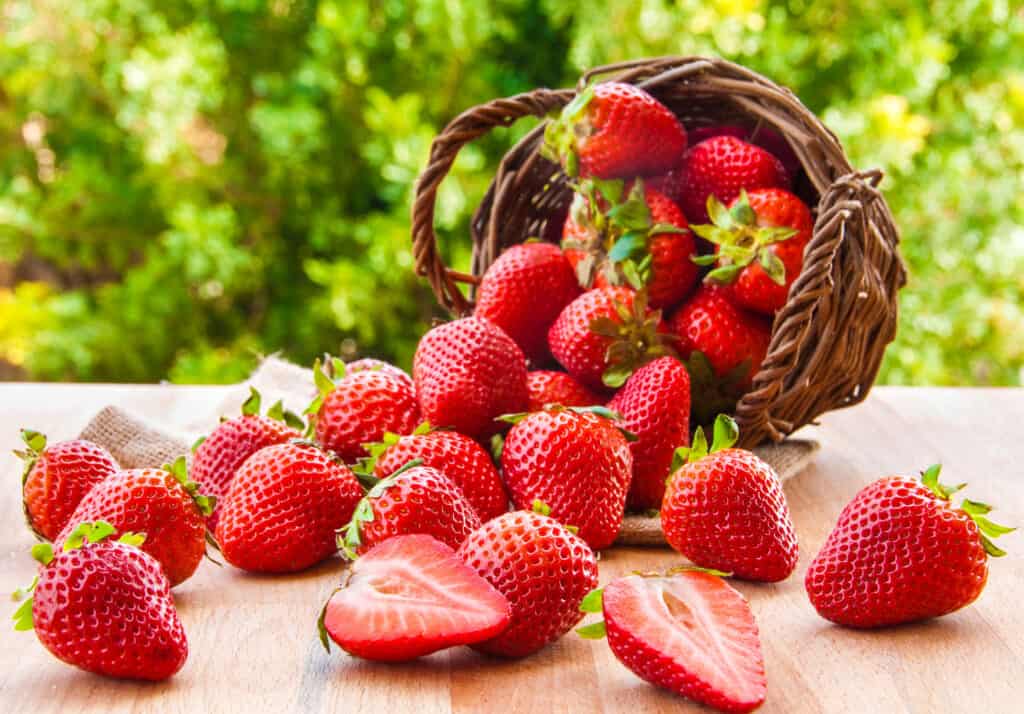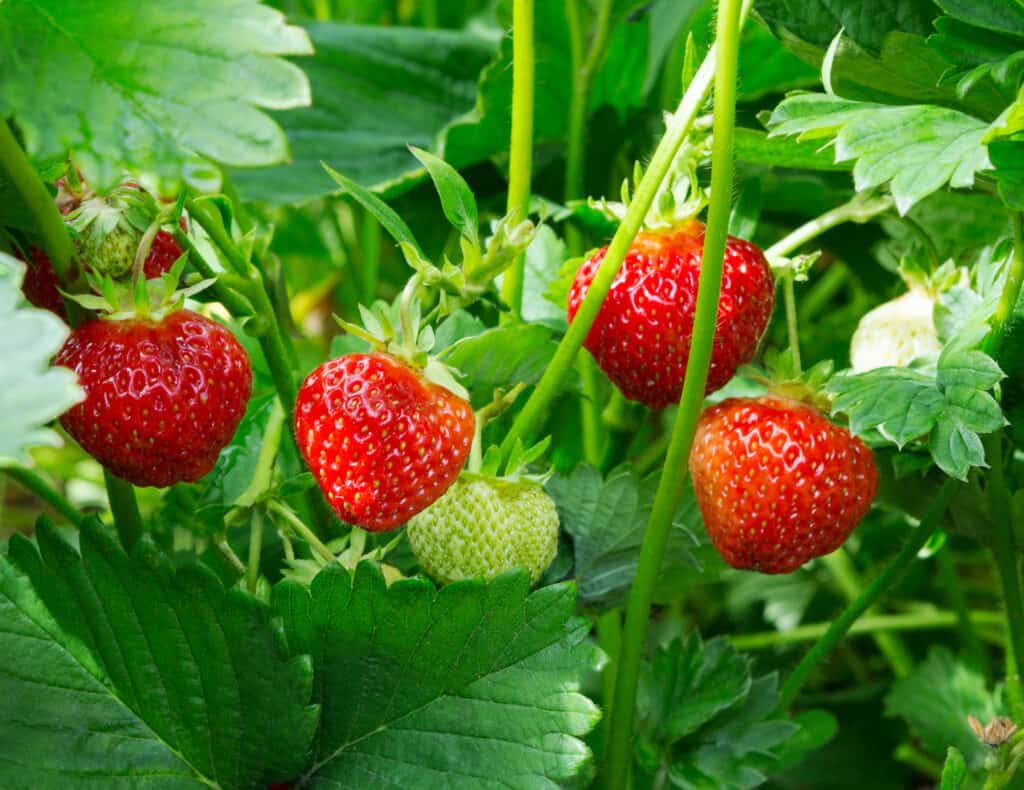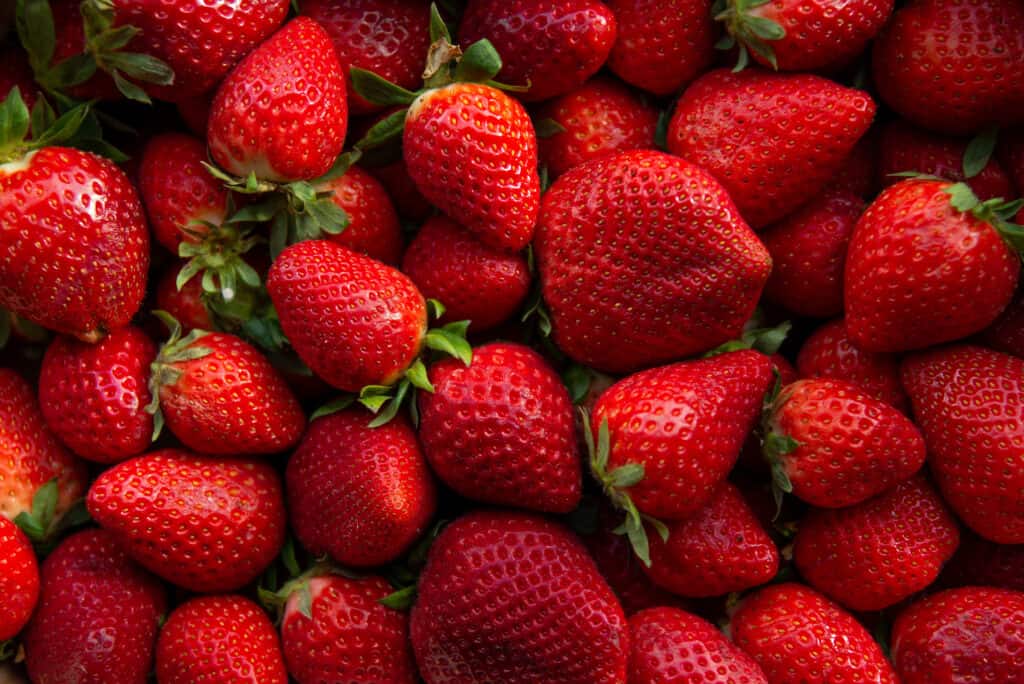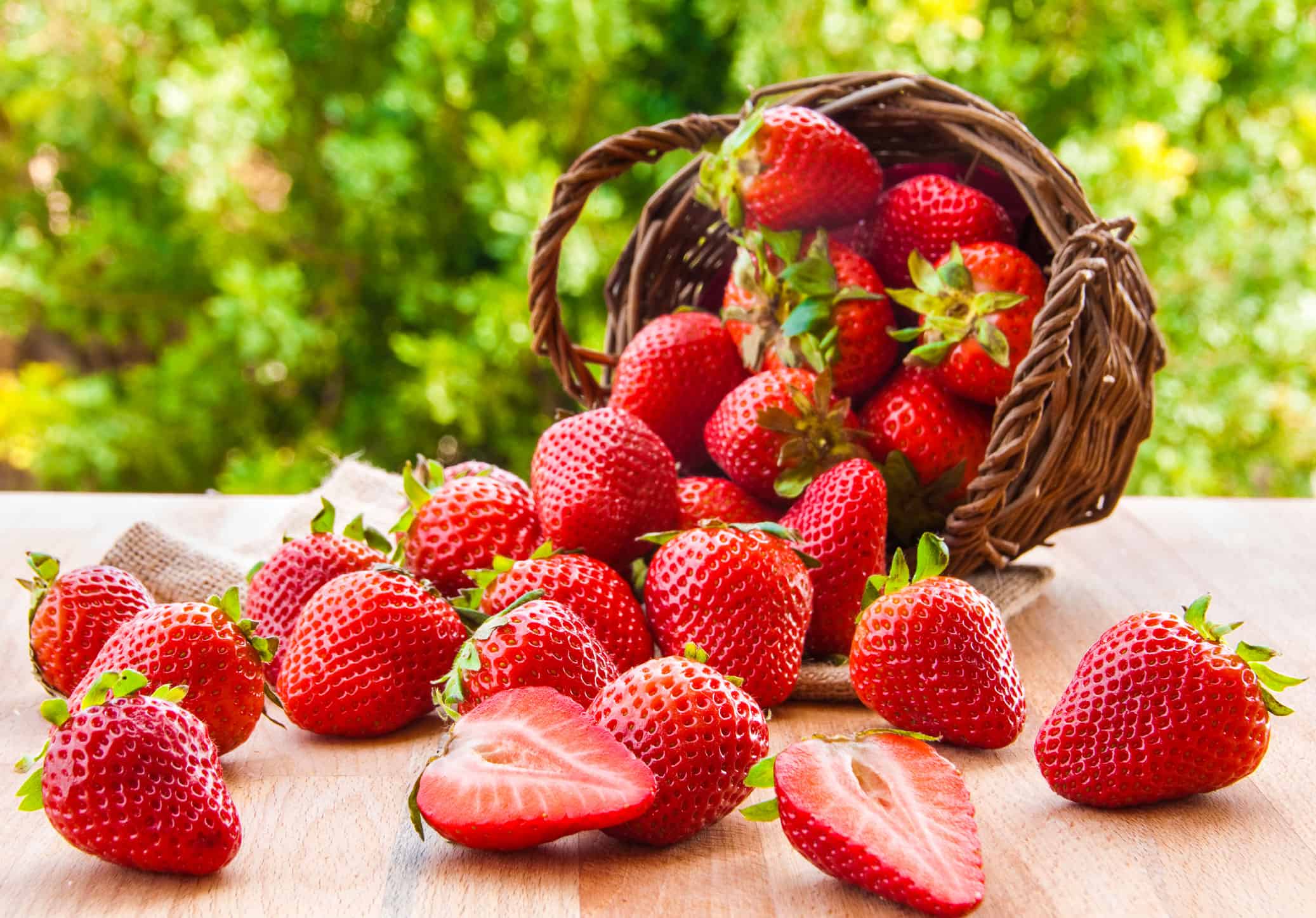If you love those juicy, sweet red berries and live in the Old Dominion, you might want to brush up on the best times and tips for growing strawberries in Virginia. Below, we’ve got 10 helpful hints, as well as the best time for planting, when to grow them, and when to harvest them.
When is the Best Time to Plant Strawberries in Virginia?

Strawberries produce runner plants. They can zap nutrients from the main plant. It’s best to trim these properly and replant them for more strawberry plants.
Get your gear together and bring out the berry plants for springtime planting in Virginia. This means you’ll typically place them in the ground between late March and early April. The plants require soil between 50 and 80 degrees F for healthy growth, along with moderate air temperatures.
Wait until the last threat of frost has passed, then plant those beautiful berry plants into organically amended, well-draining soil.
The exact timing of your planting will depend on where in Virginia you live. For your best tips, check your local gardening resources such as the nurseries and farming stores near you.
Understanding Weather Patterns in Virginia
Part of determining the right time to plant strawberries in Virginia is understanding the weather in the state. Because the state has humid, subtropical conditions with hot, humid summers and wild winters, this is especially important. The state is divided into three climatic regions, Appalachian, Tidewater, and Piedmont.
Tidewater has milder winters and therefore a longer growing season. Here, planting strawberries is more likely to be in March.
In the Piedmont region, planting typically occurs in late March, as well, as the mild winters allow for a longer season.
However, the Appalachian region will most likely call for April plantings, as this region is more prone to cooler temperatures and shorter growing seasons. In other words, Appalachian soil and air takes longer to warm up.
Where is the Best Place to Plant Strawberries in Virginia?
Choose your spot wisely for planting strawberries in Virginia. You’ll need well-draining soil in an area with plenty of sunlight all season long. Look for a spot that has at least eight hours of direct sunlight daily, with the ability to shield the plants from the wind.
What are the Best Varieties of Strawberries to Grow in Virginia?
While technically you could grow any variety in Virginia, the best strawberry plant varieties for the state include:
When Are Strawberries Ready to Harvest in Virginia?

Lush, beautiful, red strawberries like these indicate it’s time to harvest berries in Virginia. Always wait for even red coloring and firmness.
©iStock.com/MariaUspenskaya
Strawberry plant varieties will profoundly influence the exact time that your berries are ready to harvest. Most often, though, they will be ready in May to June. Contrary to other fruits, strawberries do not continue ripening after they are picked. Once you start to see the fruit growing, check for these signs to ensure they are ripe and ready for picking.
10 Helpful Hints for Growing Strawberries in Virginia
These helpful hints will encourage your garden to produce some of the most delicious and fruitful strawberries in Virginia.
1. Prepare the Soil Properly Before Planting
Before you get those strawberry plants ready, it’s best to ready the soil.
Strawberry plants prefer soil cleared of weeds and debris, with natural organic material in the soil. Aim for pH of the soil between 6.0 and 6.5 for the best results possible. If your soil is too acidic, add some lime to raise the pH levels.
2. Provide Strawberries in Virginia with Proper Spacing
Space each strawberry plant about 12 to 18 inches from the next. Give them space of about 2 to 3 feet between rows. This spacing allows for the plants to mature and spread out comfortably.
3. Plan in Garden Beds When Possible

Strawberry plants do best in garden beds and raised beds, though you can grow them in pots if need be.
©iStock.com/romiri
If at all possible, plant your strawberries in a garden bed instead of containers. The plants will grow in things like strawberry pots, but in a garden bed, they’ll have more room to expand and grow without cramped roots. This will help them live longer and produce more and better fruit.
4. Use Proper Watering Methods and Timing
Regular watering will help your strawberries in Virginia grow, bloom, and produce those beautiful berries. They should be watered deeply once weekly, with at least one inch of water. Do this during the growing season and the time leading up to the growing season. This is especially true during dry, hot weeks.
Skip overhead watering, though, and go directly to the soil to prevent fungal diseases. Also be sure to avoid overwatering to prevent root rot, which can kill your strawberry plants.
5. Propagate Your Strawberry Plants Using the Runners
Strawberry plants send out runners to naturally propagate more in their likeness. You can help the process by cutting these off and replanting them where you’d like more strawberry plants to grow.
6. Mulch Your Virginia Strawberries Properly
Remove old mulch and add a new layer each spring. This helps to regulate soil temperature, retain moisture, and keep away weeds.
Use organic mulch like pine needles, straw, shredded leaves, or grass clippings for best results. You’ll want the mulch to rest about 2 to 3 inches deep around the plants. When it’s wintertime, remove the old mulch and replace it with new later.
7. Deal with Pests and Diseases Accordingly

Strawberry plants in Virginia are prone to aphids and other pests. Keep an eye out for them and remove them manually, if need be.
©schankz/Shutterstock.com
Sometimes, strawberries in Virginia pick up diseases or pests. You’ll want to get rid of these with whatever natural means you can. Slugs, aphids, spider mites, and powdery mildew commonly plague these plants. Be sure to inspect your plants semi-regularly to help prevent these from infesting or forming.
For powdery mildew, manually use a gentle, herbicidal wash or homemade remedy for care. Remove diseased and dead leaves or fruit.
For insect infestations, manually remove any necessary, with gloved hands, and use organic sprays or homemade insecticides to get rid of them and prevent further infestation.
Tip: Don’t use chemicals on your strawberry plants. Since you’re eating them, you don’t want to ingest these chemicals yourself!
8. Fertilize Your Strawberries with the Right Fertilizers and Timing
For best results, use a 10-10-10 fertilizer for your strawberries in Virginia. Ideally, fertilize them once weekly before the growing season, and then every four to six weeks during the growing season. Reduce fertilization again after the growing season has ended. Be sure to avoid over-fertilizing, as this will result in more foliage and less (and poorer quality) fruit.
9. Trim Your Strawberries Before Winter Sets In
Before winter comes in, you’ll want to prune back your strawberry plants. Remove any dead or damaged leaves and dying fruit, as well.
10. Winterize Your Strawberries in Virginia Properly

Red, ripe, delicious fruit can be yours with the care they need, all season long. Enjoy a beautiful bounty in your home garden in Virginia.
©Erika Anes/Shutterstock.com
While some varieties of strawberries are frost-resistant, it’s best to winterize them before the first hard frost hits.
Winterize your strawberry plants by covering them with a layer of straw, pine needles, or other organic mulch a week or two before the first frost is predicted. Then, when the final frost of the season has hit, you can uncover the plants and re-mulch with new material.
For an in-depth look, check out our full guide to growing strawberries, wherever you live. And if you’re living with a balcony or small space, you can check out the best ways to grow strawberries in a pot.
Thank you for reading! Have some feedback for us? Contact the AZ Animals editorial team.








